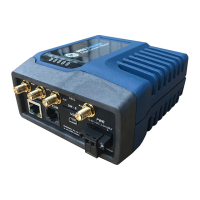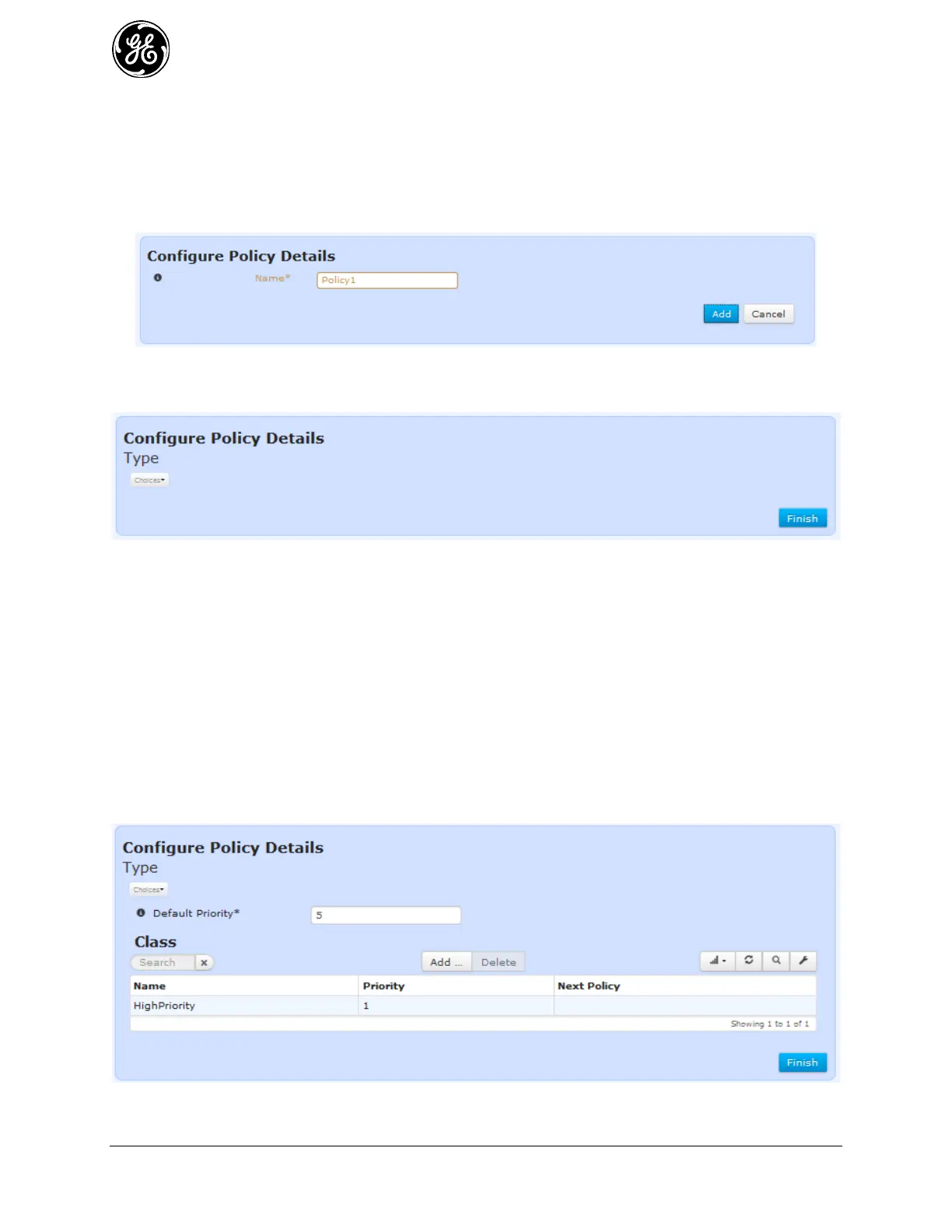294 MDS Orbit MCR/ECR Technical Manual MDS 05-6632A01, Rev. F
- Custom – Enter the ether-type value directly, as either an unsigned 16-bit integer, or an
unsigned 16-bit integer in hexadecimal format.
To specify GOOSE messages, click the Type dropdown box and select Protocol. Next, select Goose from
the Protocol drop-down box. Save the configuration.
We must now create a QoS policy that applies this classifier. Return to the QoS Services ---> Basic
Config menu and click the Add button in the Policy submenu.
Figure 3-217. Naming a new QoS policy
First, give the new policy a name and click the Add button.
Figure 3-218. Specifying the type of QoS policy
The Type dropdown contains the following options.
Prioritization - The policy will implement a priority scheduler. Higher priority packets will always
be serviced first. If there is excessive high priority traffic, lower priority packets may be lost.
Fairness – A fairness policy attempts to split up the traffic into different groups, which it services in a
round robin fashion to ensure one traffic flow does not prevent others from using the link. A fairness
policy determines traffic flows on its own and does not need the user to set up classifiers for it.
Shaping-htb – The shaping-htb policy sets up minimal and maximal data rates for classes of traffic.
Classifiers must be set up to identitfy traffic and the classifiers are used to assign that class of traffic
to one of the shaping policies. The shaping policy sets a guaranteed minimum date rate for each class
and optionally a maximum data rate that the class cannot exceed.
Since this example prioritizes GOOSE messages above all other traffic, select Prioritization.
Figure 3-219. QoS Prioritization menu

